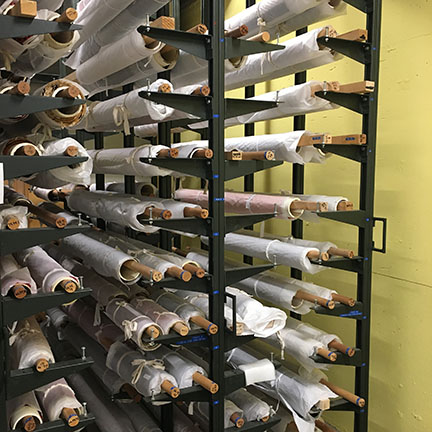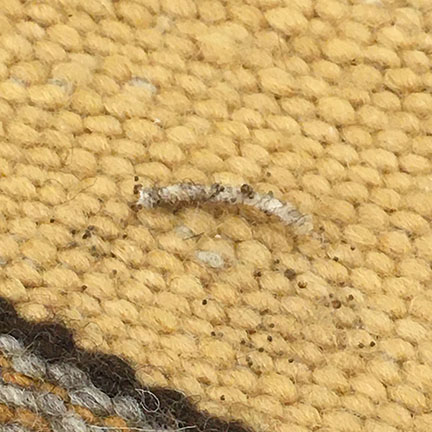
Nancy asks “How do you take care of Navajo rugs in your collection? How should I take care of Navajo rugs I have at home?”
Navajo weavings, which are generally made of sheep wool, are very susceptible to pests, especially moths. Moth larvae love to eat the protein found in animal fibers. Any new weavings that are brought into the Maxwell Museum collection are wrapped and placed in a sub-zero frost-free freezer for at least a week to kill any pests that might be hiding in the textile. After freezing, the weavings are vacuumed with a HEPA filtration vacuum to remove dirt or debris. We use a screen as barrier to ensure no textile fragments or fibers are removed from the weaving. To store our larger textiles, we roll them on archival tubes with acid-free tissue. Rolling textiles is a good way to store them because it uses less space and does not create creases in the textile. Smaller textiles are placed flat in acid-free boxes, with layers of acid-free tissue in between. Whether rolled or boxed, the textiles are protected from light, which could cause the dyes in the textiles to fade over time.
For modern Navajo weavings you have at home, you will still want to protect them from light, pests, and dust, so you can continue to enjoy them for many years. If you are displaying the weaving on your floor or wall, you should try to avoid direct sunlight on the textile. Even incandescent or fluorescent light will cause fading over time. If your textiles are dusty, you can gently vacuum with a small hand vacuum (or vacuum attachment that doesn’t have a brush) to remove dirt. Do not wash or dry clean your weavings. If you are hanging weavings on your wall you should not use nails (they can damage warp threads and are susceptible to rust.) Nails can also cause textiles to warp or sag because they are not properly supported. Sewing a sleeve to the back of the textile or using Velcro to support it on the wall are better options. For any old, fragile, and/or antique weavings you have, it is best to consult a trained conservator to help with any cleaning, repair, or display concerns.
Post by: Lauren Fuka
Check out these resources to learn more about taking care of your Navajo weavings:
https://weavinginbeauty.com/navajo-rug-101/caring-for-navajo-textiles-2
https://www.wnpa.org/wp-content/uploads/2019/06/CaringNavajoTextile.pdf?x86564

Moth casing on a woven textile